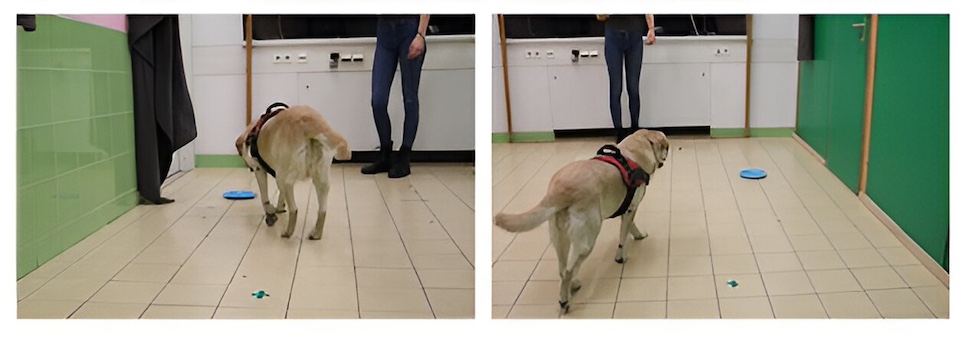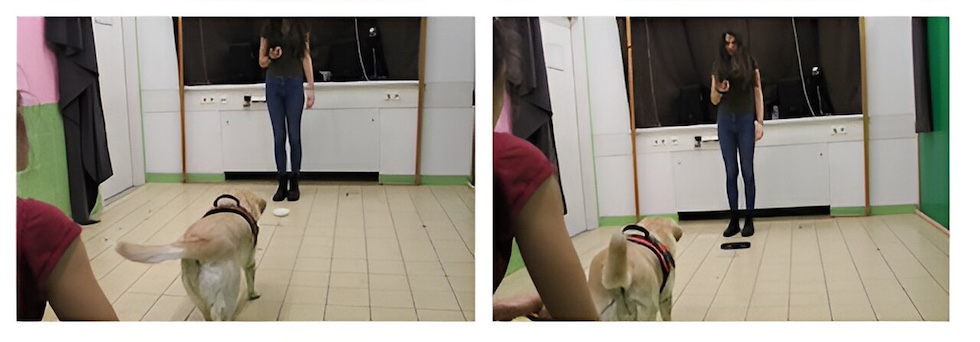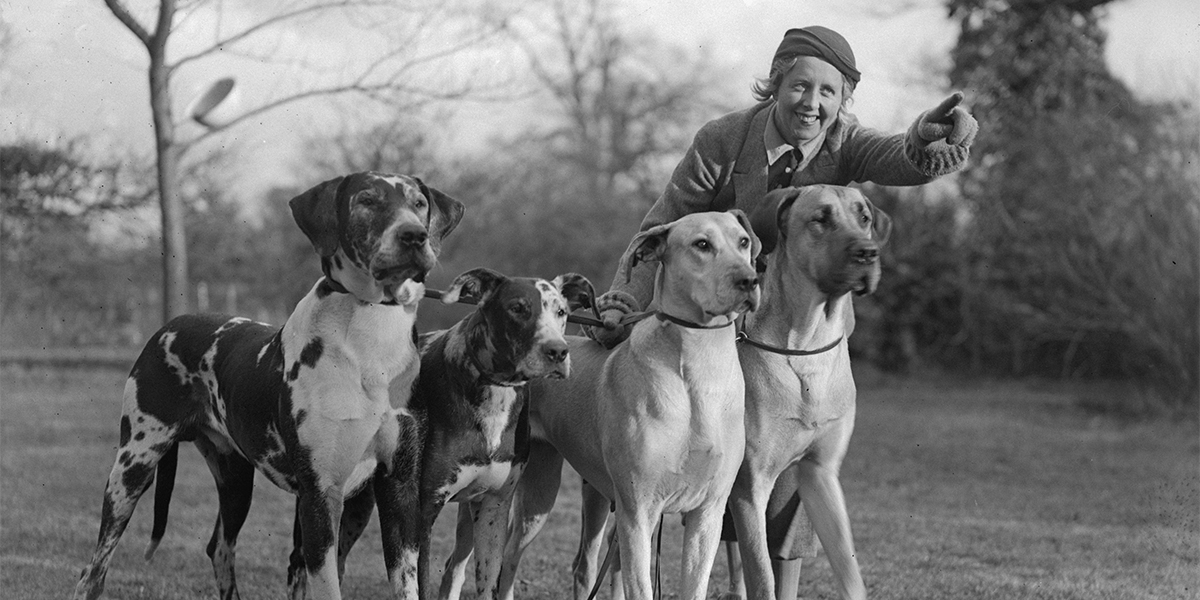loading
It often happens to people who live with a dog that they want to attract his attention by pointing with his finger at an object at a certain distance, as it also happens in many normal human interactions. It usually doesn't take long before your dog reaches for the indicated object, whether it's a cookie or a familiar toy. Most dogs generally direct their attention in the right direction, but it takes them a while to understand what the pointy object is, and sometimes they don't understand it at all.
In one Stady Recently published in a scientific journal Ethics A Hungarian research group from the Department of Ethology at Eötvös Loránd University in Budapest has tried to provide an explanation for the fact that dogs, when pointed to something, usually understand in which direction their attention should be focused but not on what. After conducting a series of experiments, the team hypothesized that this behavior is based on the priority that dogs tend to assign to the position rather than the shape of objects.
It is a result not only of the way they see, but also of the way they “think.” Some individuals with special cognitive abilities are actually able to change their approach and learn to process information in a more human-like way, in order to recognize objects also by their appearance as well as by their location.
Recognizing objects starting from a signal indicating their location is an ability that appears very early in humans during evolution. It is generally accepted described In studies on communication, language and pragmatics (the study of the relationship between signs and their users) as an effect of sharing a common symbol and above all a linguistic context, without which any “ostensible” definition would remain indeterminate. In the absence of such a context, defining a table by referring to it, for example, will not allow the interlocutor to understand which of several pieces of information is worth elaborating on – color, shape, part of the table (the bottom of the table) rather than the whole – is the most relevant. With all available information.
The Hungarian research team wrote that the ability to understand the communicative intent behind gestures that indicate body location is one of the most notable differences in children's reaction to those gestures compared to dogs' reaction. While nine-month-old infants interpret the gesture as a reference to a specific object, dogs interpret the same gesture as a general directional signal. Regardless of the intention of the person using the gesture, the meaning of the gesture for children and dogs varies.
Researchers have defined “spatial bias” as the tendency of dogs to prioritize information processing of location, distance, and spatial relationships between objects, often at the expense of object properties. To study this behavior, they conducted two different experiments in an empty room at the university's Department of Ethology on 82 dogs (39 females, 43 males) of different breeds, including the Border Collie (19), the Hungarian Pointer (17), and the Whippet (6). Each of them was accompanied by his friend, who participated in the experiments.
In the first experiment, the dogs had to react to a gesture from their owner and learn in which of two dishes placed at opposite ends of the room, one on the right and one on the left, a reward (reward) was placed. From the beginning of the test, they had 15 seconds to reach the correct plate, and a maximum of 50 attempts to learn the task they were given.

(Eneko Copini/Ethics)
The second experiment involved using only one board at a time, placed centrally at the opposite end of the room. Each dog was given the reward in only one type of dish: either a round and white dish, or a square and black dish. The alternation between the two types of boards was semi-random: the same type of boards was not used more than twice in a row. In practice, the dogs' task in this second experiment was to learn to recognize an object by its characteristics (shape and color) and not by its position. In the first and second experiments, the researchers measured the speed at which the dog ran toward the “correct” dish.

(Eneko Copini/Ethics)
The results showed that the learning times for the dogs in the first experiment were shorter than those in the second experiment, with the dogs generally having more difficulty memorizing the correct object. To gain information about the dogs' mental flexibility, the researchers then repeated the experiments with those who had the best results, but reversed the treatment setting compared to previous tests. In one experiment, they put it in the dish on the right, compared to all the dogs that put it in the dish on the left in the first experiment. In another experiment, they placed it only in the square black dish, for dogs that had previously received it in the round white dish.
Some dogs were able to overcome the task more easily and quickly than others, demonstrating a greater ability to modify previously learned behavior based on new information. The dogs that were able to recognize the dish more easily than others by its shape and color tended to be those with a greater ability to overcome spatial bias, to which not only dogs' own sensory abilities contribute in various ways – particularly visual. One already Lesson in previous research – but also individual cognitive abilities.
The study authors explained that the visual abilities of dogs differ between breeds, based on the shape of the head. “Dogs with short heads, scientifically known as brachycephalic, develop vision similar to that of humans.” He said Zsófia Bognár, one of the study's co-authors, because the structure of their retina indicates sharper, more focused vision than that of dogs of breeds with longer heads. As a rough measure of the quality of vision in dogs, a head shape measurement called the “cephalic index” is used, which is calculated by dividing the width of the skull by the length of the skull: the shorter the head, the higher the index.
Based on the overall results of the experiments and evaluating other characteristics of the dogs through cognitive tests on memory, attention and perseverance, the study nevertheless concluded that dogs with better cognitive performance are able to overcome sensory limitations and connect information to objects more easily. They also link it to positions. If dogs usually do not understand the object we point to but only the position in which it is located, in the end it depends primarily on the limits of vision related to the physical characteristics of the breed: limits that generally determine a greater attention towards moving objects instead. Like fixed ones. But secondly, it also depends on each dog's individual cognitive abilities.

“Reader. Travel maven. Student. Passionate tv junkie. Internet ninja. Twitter advocate. Web nerd. Bacon buff.”




